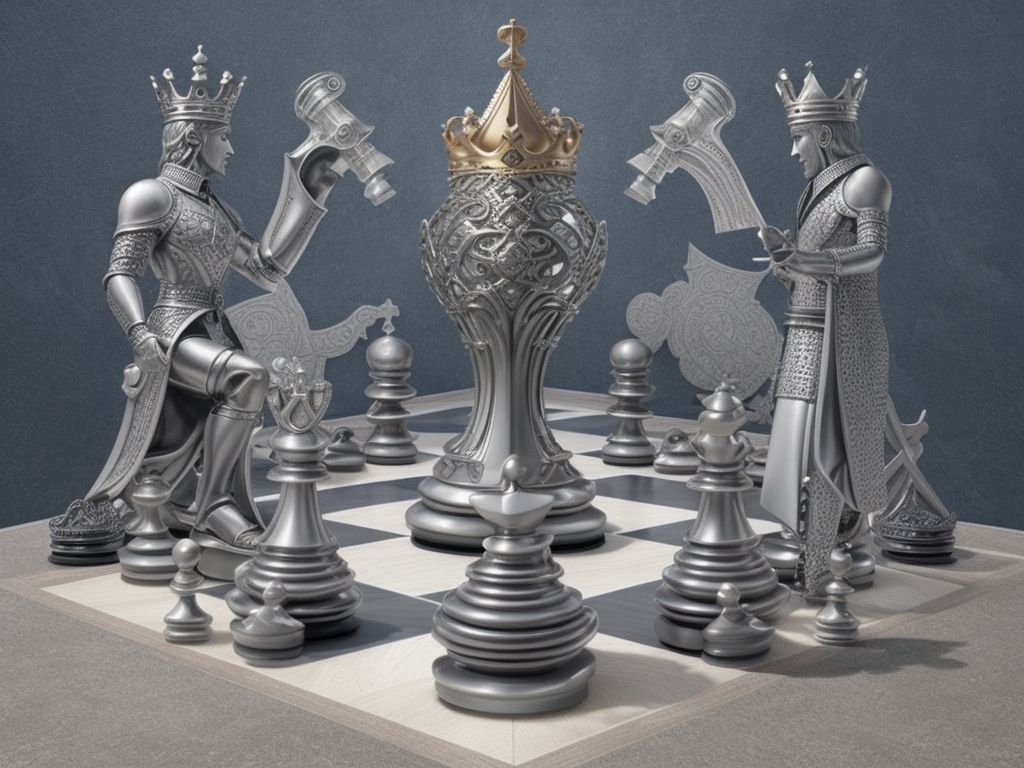Can Chess Pieces Move Backwards
Chess is a complex and strategic game; each piece has its own rules for movement. Can chess pieces move backward? Not as simple as it looks.
Pawns are special. They can move one square forward; but, they also have the ability to take opponents’ pieces diagonally.
Rooks, bishops, and queens, however, can go both forward and backward, as long as there is no blockage. This gives players a range of options to strategize.
Chess is ancient. Its initial pieces had fewer movement possibilities than today. Over time, the rules evolved, giving us the complex game we know today.
Understanding the rules of chess
To master chess, it’s essential to know how each piece moves. Here’s a table with info about it:
| Piece | Movement |
|---|---|
| Pawn | Forward, capture diagonally |
| Rook | Horizontal & vertical |
| Knight | L-shaped jumps |
| Bishop | Diagonal |
| Queen | Rook & bishop combined |
| King | One square in any dir. |
Besides primary movements, other moves exist too. Pawn promotion happens when it reaches the opposite end and can be swapped for a stronger piece. Castling is where the king & rook switch spots to keep the king safe.
For chess success, try these tips:
- Get pieces out early: Activate knights & bishops to control the center.
- Castle for protection: Castling shields the king & connects the rooks.
- Plan ahead: Think of several moves & the potential outcomes.
- Control the center: Place pieces to take charge of key squares.
- Unite pieces: Create combos & threats with coordinated pieces.
By following these tips, you’ll understand chess strategy & improve your game. To polish your skills, practice & have fun exploring this amazing game’s complexities!
The movement of chess pieces
Chess pieces each have their own unique movements. The Pawn moves one square at a time, but can move two on the first move and captures diagonally. The Rook moves horizontally or vertically in a straight line. The Knight moves in an L-shaped pattern – two squares in one direction and then one perpendicular to that direction. Lastly, the Bishop moves diagonally as far as it wants.
Plus, when a Pawn reaches the opposite side of the board, it can be exchanged for any other piece except for another King. This provides players with more flexibility and strategy options.
In 1858, Paul Morphy made an unexpected move with his Rook during a game with Duke Karl II von Braunschweig. He moved his Rook backward and captured his opponent’s Bishop, shocking everyone. His unorthodox move ended up as the winning one.
This moment reminds us that chess is a game of unpredictable possibilities. Knowing how to move the pieces is essential, but having the creativity and strategic thinking to make unique moves is key in achieving victory.
Can chess pieces move backwards?
Can pieces in chess move backwards? Novice and expert players often ponder this. The answer isn’t simple. Chess is a game of strategy and accuracy. Each piece has its own special movements. For example, pawns can only move forward while rooks, bishops, and queens have more freedom. But, all must follow rules.
To get a better understanding of backward movement in pieces, we must look at each one separately.
- Rooks can go horizontally or vertically but can’t go back after their first move.
- Bishops go diagonally but can’t reverse.
- Queens move horizontally, vertically, and diagonally but can’t change direction mid-move or go back.
- Knights have an L-shaped pattern but can’t move directly backward.
It might seem limiting that pieces can’t go backward after they go forward, but this makes the game more challenging and strategic. Players must think carefully and plan ahead.
Strategies and considerations when moving pieces
To make strategic moves when playing chess, players must assess the board and plan their moves. Considerations such as piece mobility, control of key squares, and potential attacks should be taken into account. To help with this, let’s make a table showing the factors to take into account:
| Consideration | Explanation |
|---|---|
| Piece Mobility | Evaluate the pieces’ movement ranges and utilize them efficiently |
| Control of Key Squares | Occupy important strategic squares |
| Potential Attacks | Identify weak spots in the opponent’s position and possible attacks on their pieces |
Knowing these elements can help a player succeed at chess. Furthermore, each chess piece has its own distinct movements. For instance, the pawn moves forward one square but captures diagonally, and the knight moves in an L-shape. These must be factored into decisions.
Chess originated in northern India around the 6th century. It was known as chaturanga and featured different pieces with varied movements. Over the centuries, it developed into its current form.
By understanding the strategies and considerations when moving pieces, players can position themselves for success. Each move contributes to a winning strategy and outwitting opponents in this classic game.
Conclusion
Can chess pieces move backwards? We discovered that some can, while others can’t. For example, pawns can only move forward – except for their first move where they can advance two squares. But rooks, bishops, and queens can move both forward and backward.
The knight, however, was different. Instead of moving forwards or backwards, it jumps in an L-shape. Grandmaster Garry Kasparov said that all movements, even if they’re backward, are important in chess.
We now understand the complex movements of chess pieces. From pawns to knights, each piece has its own role in this classic game. So, the next time you play chess, be sure to admire every move – even if it’s backwards!
